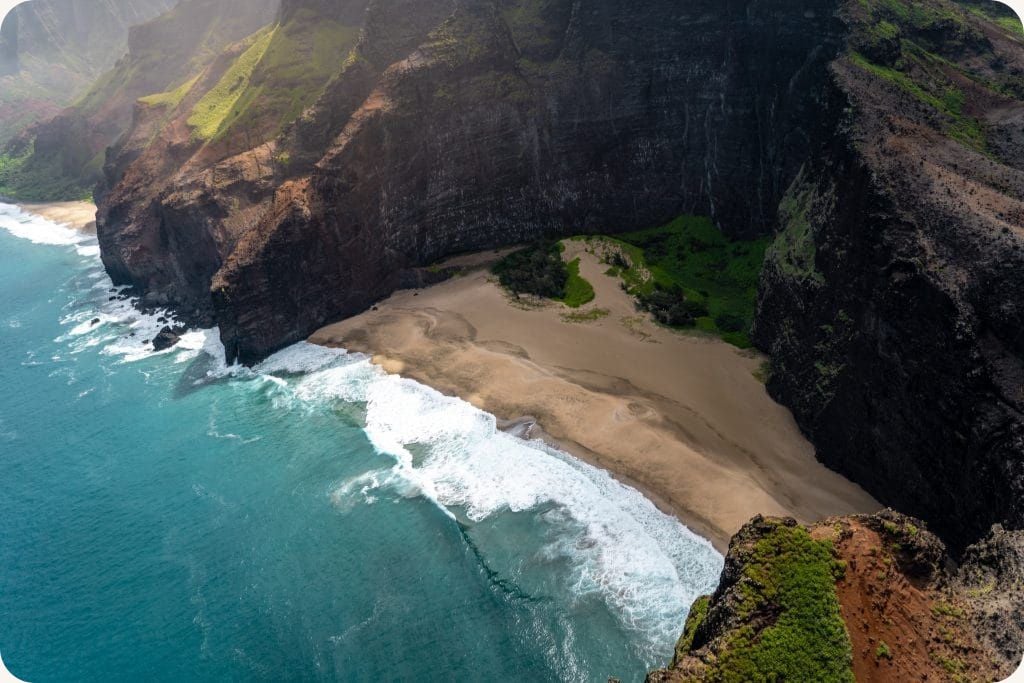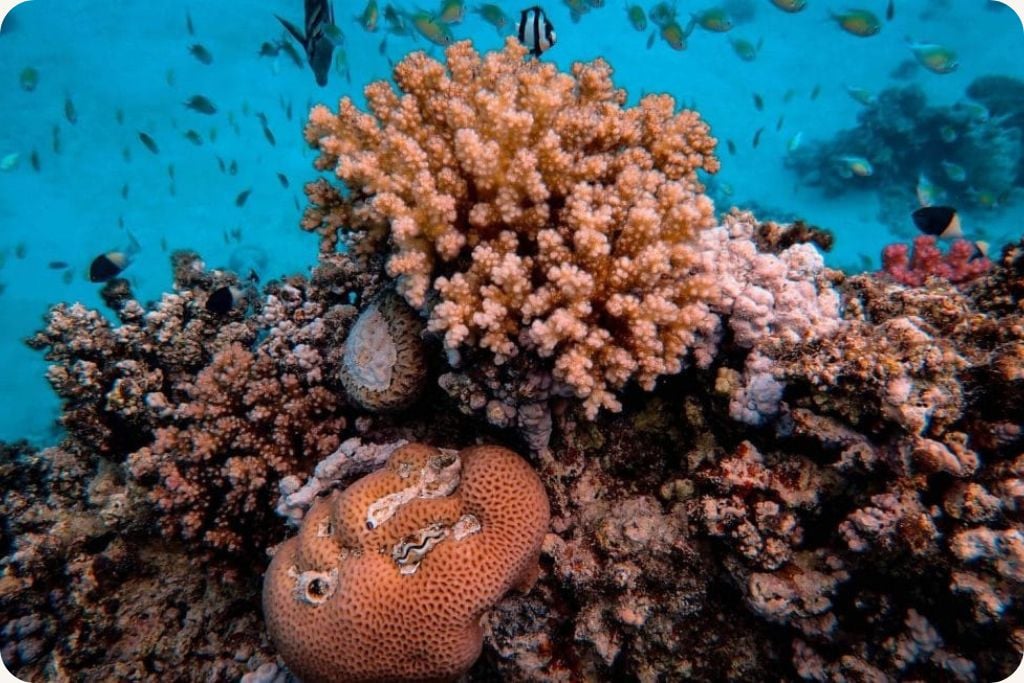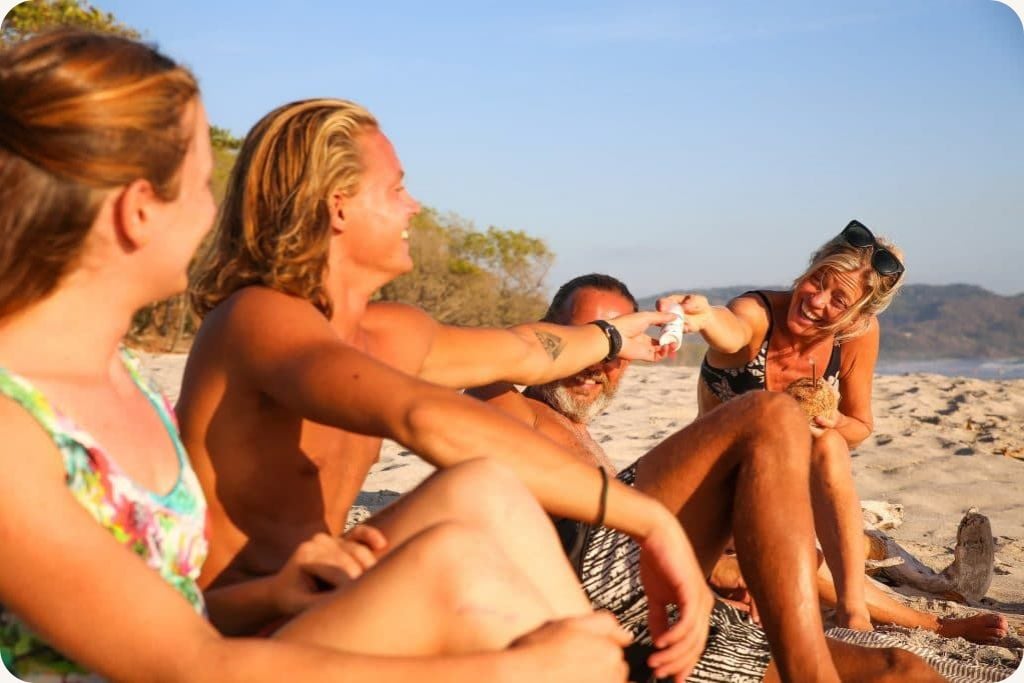WHY EIGHT DESTINATIONS WORLDWIDE BANNED TOXIC SUNSCREEN CHEMICALS

By Hanna Oltmanns - November 11, 2025
Approximately 60% of coral reefs are currently threatened by several impacts, including chemicals found in cosmetic sun products. Therefore eight places all over the world have so far taken regulatory action by banning toxic sunscreen ingredients on their ground.

U.S. VIRGIN ISLANDS
One of the forerunners is the U.S. Virgin Islands which signed a bill into law in July 2019, outlawing all imports, and sales of sunscreens containing the chemicals oxybenzone and octinoxate, which are harmful to the country’s coral reefs.
HAWAII
Hawaii, another state in the US, has voted to ban the sale of sun protection products that contain reef damaging chemicals. As Hawaii’s representative Chris Lee stated: “In my lifetime, our planet has lost about half its coral reefs. We’ve got to take action to make sure we can protect the other half as best we can ».

KEY WEST, FLORIDA
The same hope of putting pressure on sunscreen manufacturers to produce mineral sunscreens motivated Key West, a U.S. island, to enact a non-biodegradable sunscreen ban on its businesses. Mayor Teri Johnston takes the ban very serious, stating: “There are thousands of sunscreens out there, and we have one reef. We have an opportunity to do one small thing to protect that. I believe it’s our obligation”.
BONAIRE
After scientists conducted research on the effects of Oxybenzone and Octinoxate on reefs, the island of Bonaire, an island municipality of the Netherlands, also unanimously voted to ban the sale of reef-killing sun protection on its shores by 2021.
PALAU
In January 2020, Palau became the first country in the world to ban the use of ‘reef-toxic’ sunscreens in a bid to protect its coral reefs and marine ecosystems — including the UNESCO World Heritage listed Rock Islands. Palau’s legislation goes a step further than similar bans elsewhere, prohibiting the use of ten toxic sunscreen ingredients linked to coral bleaching, such as Oxybenzone, Octinoxate, and Octocrylene.
The law doesn’t just stop at banning sales — it also imposes financial penalties on vendors and allows authorities to confiscate prohibited sunscreens from tourists entering the country. Now that’s the kind of bold environmental action we love to see.
ECOTOURISM RESERVES IN MEXICO
Mexican vacations spots, like swimming holes in the Riviera Maya, have already been requesting that their visitors only use mineral and biodegradable sunscreen for some time.

THAILAND
Thailand also banned sunscreens with chemicals that damage coral from all of its marine national parks. This is the latest attempt by the Thai government to protect its coral reefs from the tourism industry.
ARUBA
In November 2019, the Parliament of Aruba announced an official ban on both single-use plastics and Oxybenzone. From July 2020, the import, sale, and production of any products containing Oxybenzone — such as sunscreens — have been penalised. By banning these two major pollutants, Aruba set out to protect its coral reefs and promote a healthier marine ecosystem.
We don’t know about you, but we’re seriously impressed by Aruba’s commitment to reef protection — tackling single-use plastics and harmful sunscreens in one go! The island has also made it easy for visitors to stay eco-friendly, with plenty of mineral-based, Oxybenzone-free sunscreens available to buy locally. So if you forget to pack your Suntribe before jetting off, don’t worry — you’ll find lots of reef-safe options waiting for you in sunny Aruba.
WHY DID THESE REGIONS BAN CERTAIN SUNSCREEN INGREDIENTS?
The first suspicion that sunscreen might be bad for coral reefs and valuable ecosystem environments came about in the early 2000s when researchers in different parts of the world revealed that commonly used UV filters cause various species of coral to bleach.
By now, many different studies are providing serious evidence that especially Oxybenzone and Octinoxate threaten the health of corals and other marine life in several ways. A study in 2016, led by the U.S. National Centers for Coastal Ocean Science (NOAA) shows four major effects of the toxic chemical Oxybenzone, also called BP-3, on early developing corals. The sunscreen component enters the ocean through wastewater and directly from swimmers wearing sun protection. Increased susceptibility to bleaching, DNA damage, abnormal skeleton growth, and gross deformities of baby corals were confirmed through this study.

Another study, published in the “December 2013 issue of Ecotoxicology”, took a closer look at Benzophenone-2, also called BP-2, another UV filter commonly used in sunscreen.They found that even at a very low concentration, the chemical can quickly kill juvenile corals, cause colorful corals to bleach, and can potentially induce or increase mutation in corals by causing damage to their DNA. But not only corals are harmed by the stated chemicals, also other parts of marine life are endangered as this graphic from NOAA illustrates:

HOW BIG IS THE PROBLEM OF SUNSCREENS IN THE OCEAN?
According to official data of the UNWTO (World Tourism Organization), it can be estimated that 10% of sunscreen products produced are used in tropical areas with coral reefs. It is evaluated that, on average, about 25% of the sun protection applied to the skin are released in the water over a course of a 20 minutes swim. According to these numbers, it is believed that up to 10% of the world’s coral reefs are threatened by sunscreen chemicals.
The conclusion by the Environmental Health Perspectives states: “Because human use of tropical ecosystems and coral reefs is progressively increasing, we predict that the impact of sunscreens on coral bleaching will grow considerably in the future on a global scale. Actions are therefore needed to stimulate the research of utilization of UV filters that do not threaten the survival of these endangered tropical ecosystems. »

Not only are coral reefs and ecosystems harmed by chemical components in sunscreen, but studies by the FDA (U.S. Food and Drug Administration) for example, have shown that also human health is endangered by common chemical UV filters. Scientists discovered that chemical UV filters penetrate the user’s skin and enter a person’s bloodstream at high concentrations.
WHICH UV-FILTERS ARE SAFE TO USE FOR YOU AND YOUR FAMILY?
There are two main types of UV filters: chemical and mineral (also called physical) filters. Chemical filters, like Oxybenzone and Octinoxate, absorb UV rays beneath your skin, acting like a sponge.
Mineral filters, on the other hand, protect your skin by sitting on top of it and reflecting UV rays away—like a tiny mirror or shield. There are only two mineral UV filters: Zinc Oxide and Titanium Dioxide.
Research shows that the only UV filters proven safe for both coral reefs and human health are Non-Nano Zinc Oxide and Non-Nano Titanium Dioxide. By choosing a mineral sunscreen made with either or both of these two ingredients, you’re choosing protection that’s safe for you and for nature.
ABOUT THE AUTHOR
Hej, I’m Hanna. I love the outdoors and I am the first one to enjoy every beam of sunshine possible. Through traveling several countries over the past few years, I have become more and more aware of the great need for sustainability in every aspect of our daily life. Through working with Suntribe I am joining the movement of sustainable production of organic cosmetic and help to raise awareness about the issue of harmful chemicals in personal care products for humans and nature alike.
